#Pongal Festival
Explore tagged Tumblr posts
Text
HAPPY LOHRI, MAKAR SANKRANTI, UTTARAYAN, PONGAL & MAGH BIHU, fellow Hindus. 😁😁😁

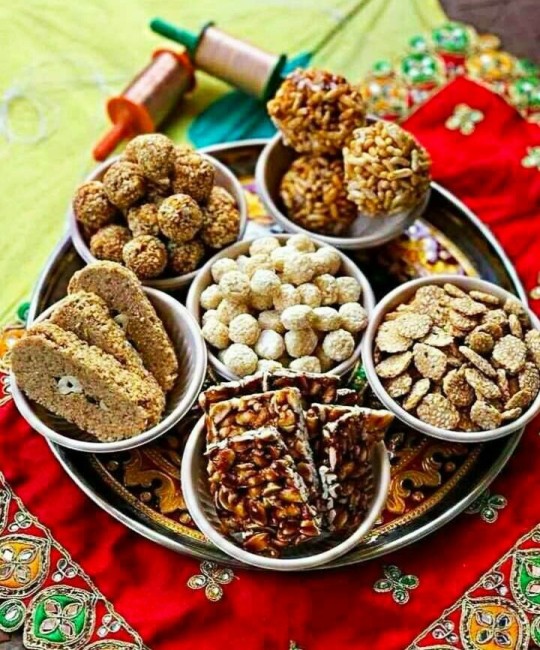



#pongal#makar sankranti#lohri#uttarayan#bihu#hindu festivals#sanatandharma#sanatan dharma#desi#desi tag#desiblr
19 notes
·
View notes
Text
youtube
Happy pongal from your local Tumblr pokkiri
#பொங்கல் நல்வாழ்த்துக்கள் தோழர்கள்#ill be making pongal tomorrow in my house and it is -6 f rn#celebrating an equatorial harvest festival in the midwest 😭 only pain
6 notes
·
View notes
Text
Celebrating Makar Sankranti in India
Every year Makar Sankranti falls on the 14th or 15th of January, and there’s a good reason for that too. The term “Sankranti” refers to the movement of the Sun from one Zodiac to another, so there are a grand total of 12 Sankrantis. What makes Makar Sankranti special? During Makar Sankranti, the Sun moves from Sagittarius or Dhanu Rashi to Capricorn or Makar Rashi, in numerous ways this signifies a new beginning. The Sun which moves into the Northern Hemisphere leads to longer days and the end of the Indian Winter. It falls during the harvest season, with freshly cut crops offered to gods and subsequently eaten. The period signifies “fertility” and bursting into action after the slow and delirious winter season. It ushers in the “auspicious” part of the year which lasts until Karkata Sankranti which falls somewhere in July. It is also the only festival celebrated going by the solar calendar. The contrast between the cozy western holiday season and the vibrant onset of Hindu fertility is an abrupt transition but goes perfectly with the hopeful nature of the new year.
All over India, Makar Sankranti is celebrated in different ways with each one doing their own thing. 14th/15th January signifies not one or two but many festivals.
In Tamil Nadu, the festival is known as Pongal, which translates to “to boil, overflow” and freshly cut rice is cooked with milk and jaggery. The Tamil version can be traced back to the Chola empire, so roughly around the 9th to 13th century. Spread over three days (and a lesser-known fourth day), each day has its own significance. The first day is known as Bhogi Pongal or Indran and focuses on cleaning the house, as each member dusts and scrubs until every surface is squeaky clean. The second day is called Thai Pongal or Surya Pongal and is the most important day, the Pongal is made and first offered to the gods, then the cattle, and only after that are the family members allowed to have it. The third day is spent grooming and worshipping the cattle.
Uttayaran in Gujarat can only be defined by one word, “vibrant”. Strewn across skies are kites that made for a tapestry. There is an industry revolving around this particular time of the year, as kite sales skyrocket (pun intended) and officials from different countries come to participate in kite competitions. The reason behind flying kites is that being out in the Sun after the winter helps kill germs and be more exposed to Vitamin D. Dishes like Undhiyo that are nearing the end of their season are relished for the last time.
If we go farther North, we come across Lohri, the Punjabi variant of Makar Sankranti. The folklore attached to Lohri is of a man known as Dulla Bhat, who lived during the reign of Emperor Akbar. He used to steal from the rich and distribute it among the poor. In his honor, people sing “Sundar Mundriye” during Lohri. This story is different than the religious and godly myths surrounding the other festivals, and it’s fascinating how a festival honors a man who worked for the needy. Punjab is a largely agrarian state, so the festivities are rooted in harvesting crops. People get together around huge bonfires and eat everything from Chikki to Saro ka Saag.
There are tons of other festivals on this day, in Assam it's called Magh Bihu with games like tekeli-bhonga (pot-breaking) and buffalo fighting taking place. In Bihar, locals have chuda-dahi (beaten rice and yogurt) and a portion of gur (jaggery), and in Bengal, it’s called Poush Sankranti and have sweets like pithe, patishapta, etc. with rice and palm jaggery.
- Priyanshu

Painting Credits: Ladies on a Terrace Kite-fighting, circa 1775.
#india#indian#indian dark academia#indian aesthetic#aesthetic#dark academia#indian culture#desi#desi dark academia#makar sankranti#kites#kite flying#kite festival#pongal#magh bihu#uttarayan#Gujarat#Assam#Punjab#tamil Nadu#lohri#indian festival#indian festivals#festival#festivals
22 notes
·
View notes
Text
Trendy Kids Wear for the Upcoming Festive Season
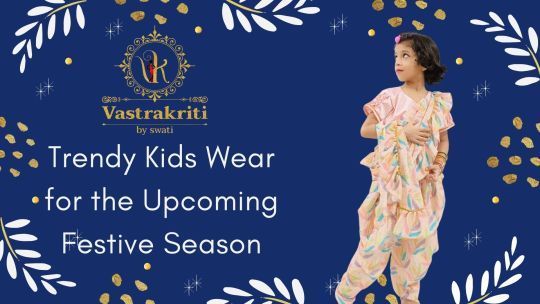
The festive season is just around the corner and it’s time to dress up our little stars in outfits that reflect the joy and exuberance of the celebrations. The fashion world offers a plethora of options for kids’ wear, ensuring that our little ones shine bright during these special occasions. From traditional attire to contemporary ensembles, let’s explore some trendy kids’ wear that are set to steal the show in the upcoming festive season.
1. Gota Patti Anarkali Suit
A unique twist to the classic Anarkali suit, the Gota Patti Anarkali features intricate Gota Patti work on the kurta, adding a touch of regal elegance. The vibrant colors and rich embellishments make this outfit perfect for festive occasions.
2. Pathani Suits
Pathani suits are a popular choice for boys and offer a traditional and stylish look. These ensembles typically include a knee-length kurta paired with loose-fitting pants. Pathani suits come in various fabrics like silk, cotton and linen adorned with exquisite embroidery or embellishments. With their regal appeal and comfortable fit, Pathani suits are ideal for boys to rock during festive celebrations.
3. Indo-Western Dhoti Saree
This fusion outfit combines the grace of a saree with the comfort of dhoti pants. The drape of the saree is paired with a stylish dhoti bottom, creating a modern and playful look for girls. It’s a perfect blend of tradition and contemporary fashion.
4. Nehru Jacket with Jodhpuri Pants
Boys can rock this dapper ensemble consisting of a Nehru jacket paired with Jodhpuri pants. The intricately designed jacket adds a touch of sophistication while the fitted pants complete the traditional yet trendy look. It’s a perfect choice for boys who want to stand out during festive celebrations.
5. Cape Style Lehenga
Make your little girl feel like a princess with a cape style lehenga. This unique outfit features a flared lehenga paired with a cape-style top, creating a majestic and fashionable look. The cape can be embellished with intricate embroidery or adorned with sequins for a dazzling effect.
6. Floral Sherwani with Churidar
For boys who want a unique ethnic look, a floral printed sherwani paired with churidar pants is a great choice. The vibrant floral patterns add a refreshing and eye-catching element to the traditional sherwani making it a standout outfit for festive celebrations.
7. Gharara Suit
A gharara suit is a traditional ensemble that consists of a short kurti, flared pants and a dupatta. The unique feature of the gharara pants is the multiple pleats at the knee, creating a beautiful silhouette. This outfit is perfect for girls who want a traditional yet distinctive look during festive occasions.
8. Mirror Work Ghagra Choli
A ghagra choli with mirror work is a stunning choice for girls. The mirrors, often intricately embroidered onto the fabric, create a mesmerizing effect. This outfit is perfect for those who want to add a touch of glamour and sparkle to their festive attire.
9. Indo-Western Fusion Outfits
Indo-western fusion outfits have gained immense popularity in recent years, offering a contemporary twist to traditional wear. These outfits combine elements from both Indian and Western fashion, resulting in unique and stylish ensembles. Girls can rock fusion gowns, dhoti-style dresses or crop top-skirt combinations while boys can opt for fusion kurta-shirts or jacketed kurtas paired with jeans. Indo-western fusion outfits bring a fresh and modern vibe to the festive season.
As the festive season approaches, it’s time to deck out our little ones in fashionable and trendy attire that captures the spirit of celebration. From traditional outfits like Anarkali suits and Pathani suits to the elegance of lehenga-choli sets and the fusion charm of Indo-western ensembles, the options are limitless. Let your kids shine bright in these trendy kids’ wear as they spread joy, happiness and cultural pride during the upcoming festivities. Dress them up in style with www.vkbyswati.com and create cherished memories that will last a lifetime.
#children#ethnic wear#fashion#kids fashion#online shopping#kids wear#indian wear#parenting#kids#vastrakriti by swati#festivewear#diwali#christmas#navratri#pongal#holi festival#janmashtami#sankranti#eid mubarak#birthday#birthday outfit#ethnicwear#ethnicfashion
2 notes
·
View notes
Text
Happy Bhogi!
🔥 Happy Bhogi, the Festival of Bonfires! 🔥 As the sun rises on this auspicious day, let the warmth of the bonfire fill your hearts with joy and the spirit of renewal. Bhogi, the first day of the Pongal festival, marks the beginning of the harvest season in South India. It is a time to express gratitude to the earth for its bountiful gifts and celebrate agricultural abundance. Image taken from…
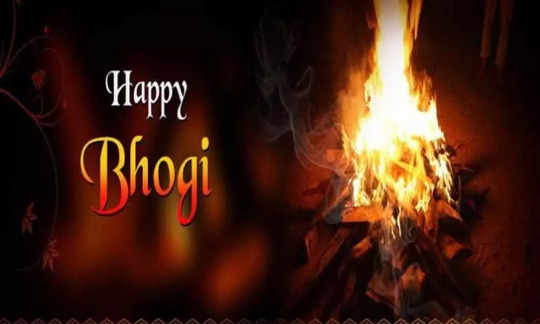
View On WordPress
#Bhogi#Bonfire#Celebration#harvest season#Hindu#Hindu Solar Calendar#India#Indian festival#Indian Traditions#Pongal#Raffaello Palandri#tradition
4 notes
·
View notes
Text

As the fire of Lohri burns bright, may it light up your life with love and positivity. Happy celebrations!
Call For Booking - 91-97118 87818 / 095600 25618
Visit us @ - https://hrhotelsandresort.com/
#lohri#lohricelebration#festival#happylohri#sankranti#india#indianfestival#lohrifestival#pongal#lohriparty
#lohri#lohricelebration#festival#happylohri#sankranti#india#indianfestival#lohrifestival#pongal#lohriparty
3 notes
·
View notes
Text

Hope that this new season lights up your life and brings a bright smile to your face. Wishing you and your dearest ones a very happy Lohri.
For Inquiry : +91-98116 36065 , +91-11-61300105
Mail Your Requirement : [email protected]
Web : www.shashiethnic.com
Find Us on :
IX/6319, Jain Mandir Gali, Gandhi Nagar, Delhi - 110031
#lohri#lohricelebration#festival#happylohri#sankranti#india#indianfestival#lohrifestival#pongal#lohriparty
#lohri#lohricelebration#festival#happylohri#sankranti#india#indianfestival#lohrifestival#pongal#lohriparty
3 notes
·
View notes
Photo
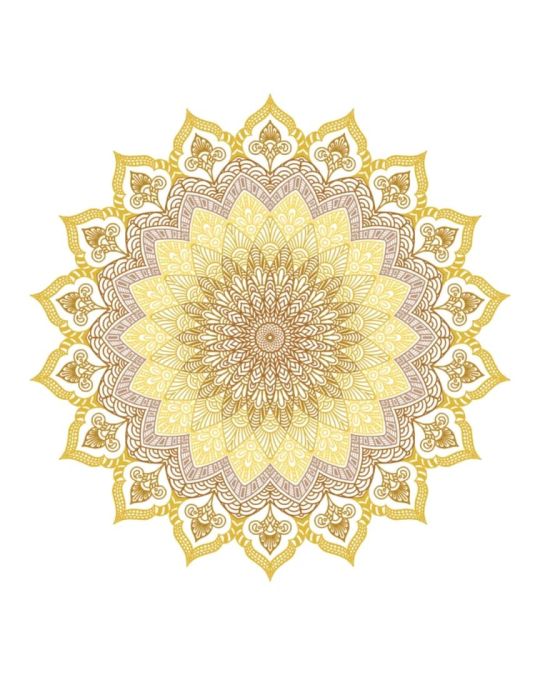
ϐׁׅ֒ᨵׁׅυׁׅꪀׁׅtׁׅꪱׁׅ⨍υׁׅᥣׁׅ֪ Where I currently live, it's Harvest season and that means celebrating the harvest festival called Pongal; that brings two things to mind - images of luscious paddy fields filled with crop heavily laden with grain and this delicious rice-and-lentil Risotto, sweetened with unprocessed sugar and riddled with Cashews and Raisins tempered in clarified butter, named after the festival it's significantly associated with. It's so deliciously sweet, fulfilling and warming, and it's this beautiful golden color like the rays of the morning sun it's made in honor of. And there's the inspiration for today's palette. Week 3 of the Serenity series and instead of simply doing a fill-in this week, I wanted to dust off my Mandala drawing skills. Here's to making more art that makes the soul happy! Happy Arting, y'all! --- #harvest #food #harvesttime #love #pongal #festival #tamil #tamilnadu #chennai #makarsankranti #pongalcelebration #india #love #pongalopongal #pongalfestival #sankranti #southindianfood #pongalwishes #happy #celebration #pongalfood #pongalkolam #mandala #digitalart #digitalartist #xppen #ibispaintx #artoftheday #artistsoninstagram https://www.instagram.com/p/CnvwfzWv46o/?igshid=NGJjMDIxMWI=
#harvest#food#harvesttime#love#pongal#festival#tamil#tamilnadu#chennai#makarsankranti#pongalcelebration#india#pongalopongal#pongalfestival#sankranti#southindianfood#pongalwishes#happy#celebration#pongalfood#pongalkolam#mandala#digitalart#digitalartist#xppen#ibispaintx#artoftheday#artistsoninstagram
4 notes
·
View notes
Photo





The cattle worshipping ritual of Pongal can be traced back to this legend. People show their gratitude to the descendants of Nandi who have helped them harvest their crops throughout the year. Share this with your friends and family, and comment below “Har Har Mahadev Download the IMAVATAR App now! And to access our religious & spiritual universe.
#lordshiva#nandi#pongal#spirituality#religious#hindu mythology#Hindu festival#hindugods#hindusim#tamilnadu#imavatar
3 notes
·
View notes
Photo
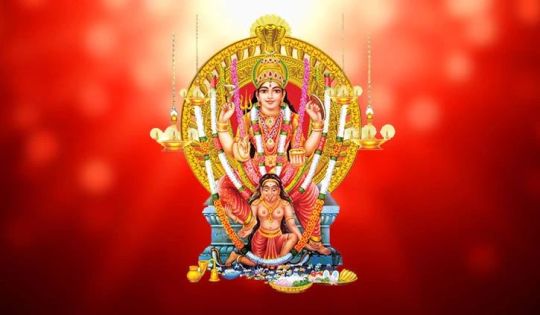
ആറ്റുകാൽ അമ്മയ്ക്ക് പ്രണാമം 🙏🕉️ ആറ്റുകാൽ പൊങ്കാല ആശംസകൾ 💖🎊🎉 Attukal Pongala Festival Wishes 👍✨ #pongala #pongal #attukalpongala #sra #srapangodetvm #festival #sbtrendzonline #SBTrendZ #dabs #trivandrum #attukal #trivandrumdiaries #pongalcelebration #pongalopongal #pongalwishes #pongalfestival #pongaldress #india #trivandrumcity #attukaltemple #pongalavibes #thiruvananthapuram #pongalspecial #kerala #feels #devotional #daily #igdaily #trivandram (at Thiruvananthapuram, Kerala, India) https://www.instagram.com/p/CpeVcBaPkrx/?igshid=NGJjMDIxMWI=
#pongala#pongal#attukalpongala#sra#srapangodetvm#festival#sbtrendzonline#sbtrendz#dabs#trivandrum#attukal#trivandrumdiaries#pongalcelebration#pongalopongal#pongalwishes#pongalfestival#pongaldress#india#trivandrumcity#attukaltemple#pongalavibes#thiruvananthapuram#pongalspecial#kerala#feels#devotional#daily#igdaily#trivandram
2 notes
·
View notes
Text
youtube
#youtube#social media#vacation#pongal#danceparty#dancehall#dancers#dancevideo#dance choreography#dancechallenge#dancer#dancing#dance#folk dance#indie folk#folk music#folk dress#festival#festiveseason#festivities#tumblr girls#curvy girls#dancelove#indian#india#socialite#villagecore#dancelife#indian music#viral video
4 notes
·
View notes
Text
India's Rich Heritage | Emergency Visa to India | Monsoon Destinations | Vibrant Festivals of India
Why Should You Discover India's Rich Heritage, Best Monsoon Destinations, and Vibrant Festivals?
India is a land of diverse cultures, stunning landscapes, and vibrant festivals. In this blog, we will explore three fascinating aspects of India: its rich heritage, the best places to visit during the monsoon, and the colorful festivals that light up the country. Additionally, we will guide you on how to get an urgent evisa to India for a seamless travel experience.

India’s Rich Heritage
India’s heritage is a tapestry woven with centuries of history, culture, and traditions. Here are some highlights:
Historic Monuments
Taj Mahal, Agra:- The Taj Mahal is a symbol of love, built by Emperor Shah Jahan in memory of his wife Mumtaz Mahal. This white marble wonder is one of the Seven Wonders of the World.
Qutub Minar, Delhi:- The Qutub Minar is a 73-meter tall tower, built in 1193 by Qutab-ud-din Aibak. It is an excellent example of Indo-Islamic architecture.
Hampi, Karnataka:- Hampi is an ancient village with ruins of temples and palaces from the Vijayanagara Empire. It is a UNESCO World Heritage Site.
Cultural Sites
Varanasi, Uttar Pradesh:- Varanasi is one of the oldest cities in the world. It is a major cultural and religious center for Hindus. The ghats along the Ganges River are famous for their spiritual significance.
Rajasthan’s Palaces:- Rajasthan is home to magnificent palaces and forts. The City Palace in Jaipur and the Mehrangarh Fort in Jodhpur are must-visit sites.
Kerala’s Backwaters:- Kerala’s backwaters offer a unique cultural experience. You can explore the serene waters on traditional houseboats and witness the local lifestyle.
Heritage Festivals
Diwali:- Diwali, the festival of lights, is celebrated with great enthusiasm across India. Homes are decorated with lamps, and fireworks light up the night sky.
Holi:- Holi, the festival of colors, is a joyous celebration where people throw colored powders at each other. It signifies the arrival of spring.
Durga Puja:- Durga Puja is celebrated mainly in West Bengal. It honors the goddess Durga, with elaborate decorations, music, and dance.
Best Monsoon Places to Visit in India
The monsoon season transforms many parts of India into lush green paradises. Here are some of the best places to visit during the monsoon:
Munnar, Kerala
Munnar is a hill station known for its tea plantations and scenic beauty. During the monsoon, the entire region becomes lush and vibrant. The waterfalls are at their fullest, and the misty mountains create a magical atmosphere.
Coorg, Karnataka
Coorg, also known as Kodagu, is a popular monsoon destination. The coffee plantations, rolling hills, and flowing streams make it a perfect place to enjoy the rains. Abbey Falls and Iruppu Falls are particularly beautiful during this season.
Cherrapunji, Meghalaya
Cherrapunji is one of the wettest places on earth. The monsoon season here is spectacular, with numerous waterfalls cascading down the hills. The living root bridges are a unique attraction you shouldn’t miss.
Lonavala, Maharashtra
Lonavala is a popular hill station near Mumbai. During the monsoon, the region is covered in greenery, and the waterfalls and lakes are full. Bhushi Dam and Tiger’s Leap are great spots to enjoy the rain.
Valley of Flowers, Uttarakhand
The Valley of Flowers is a UNESCO World Heritage Site. It is a paradise for nature lovers and trekkers. During the monsoon, the valley blooms with a variety of colorful flowers, creating a breathtaking view.
Vibrant Festivals of India
India’s festivals are a vibrant reflection of its culture and traditions. Here are three festivals that showcase the country’s diversity and spirit:
Ganesh Chaturthi
Ganesh Chaturthi is a festival dedicated to Lord Ganesha, the elephant-headed god of wisdom and prosperity. It is celebrated with great fervor, especially in Maharashtra. Large idols of Ganesha are installed in homes and public places, and elaborate processions mark the end of the festival.
Pongal
Pongal is a harvest festival celebrated in Tamil Nadu. It marks the end of the farming season and is a time to thank the sun god for a bountiful harvest. People prepare a special dish called Pongal, decorate their homes with rangoli, and enjoy traditional music and dance.
Navratri
Navratri is a nine-day festival dedicated to the goddess Durga. It is celebrated with great enthusiasm in Gujarat and other parts of India. People perform traditional dances like Garba and Dandiya, and worship the goddess in her different forms.
How to Get a Visa for India
To enjoy all these wonderful experiences, you need to get a visa for India. The process is simple, and there are several options available, including an emergency visa to India for last-minute travel plans. You can also apply for an urgent Indian eVisa online, which is quick and convenient.
Online India Visa
You can apply for an online India visa through the official government website. This process is straightforward and allows you to fill out the necessary forms and submit your documents electronically.
Urgent Visa to India
If you need to travel to India on short notice, you can apply for an urgent visa to India. This option speeds up the processing time, ensuring you get your visa quickly.
Emergency Visa to India
In cases of real emergencies, you can opt for an emergency visa to India. This is designed for situations where immediate travel is required due to unforeseen circumstances.
By following these steps, you can ensure that your trip to India is smooth and hassle-free.
Conclusion
India is a country of endless wonders. Its rich heritage, beautiful monsoon destinations, and vibrant festivals make it a perfect travel destination. Whether you are a history buff, a nature lover, or someone who loves cultural experiences, India has something to offer. So pack your bags, get your visa for India, and get ready to explore the magic of this incredible country!
With options like the urgent Indian eVisa and emergency visa to India, planning your trip has never been easier. Don't miss out on the chance to experience the beauty and diversity of India.
Happy travels! ✨
#Navratri#Pongal#Ganesh Chaturthi#Vibrant Festivals of India#Valley of Flowers#Uttarakhand#Lonavala#Maharashtra
1 note
·
View note
Text
Pongalo Pongal!
Every January, Tamil people celebrate happy harvests with the festival of Pongal. The festival is an expression of gratitude -- to the Sun God ‘Surya’, to Mother Nature, to various farm animals, to the community, and all the forces that helped with a bountiful harvest.
‘Pongu’ is Tamil for ‘to boil over’. The festival shares its name with the dish made during celebrations – Pongal is prepared from freshly harvested rice and sweet jaggery. As the Pongal finally boils over the edge of the pot, people yell ‘Pongalo Pongal!’, which means ‘may this rice boil over’.
Pongal is celebrated over multiple days: The first, Bhogi, is celebrated on the last day of the Tamil month of Margazhi. Houses are cleaned, old belongings are discarded and bonfires are lit. People wear new clothes. Prayers are offered to the rain gods, thanking them for a good harvest and praying for the same in the upcoming year. The day focuses on discarding the old and welcoming the new.
The second day, Surya Pongal, is the main festival. Celebrated on the first day of the Tamil month of Thai, the day centres on the Sun God. Pongal is made on this day, to joyous chants of ‘Pongalo Pongal’ and other traditional songs. The pongal is offered to deities, then farm animals, shared by the community.
On Mattu Pongal, the third day, people thank their cows. Mattu means cow or cattle, and these mighty creatures are worshipped and sources of wealth. Cows are decorated with kumkumam, manjal (turmeric) and their horns are painted. On this day, traditional games like Jallikattu take place.
Kanum Pongal is the last day of the festival. Kaanum, here, means ‘to visit’. The day centres on community. Sakkarai Pongal, or sweet Pongal is prepared and distributed amongst the community. Traditional songs and dances are performed. Food and sweets are offered to the birds, placed on a turmeric leaf left out in the open.
- Charu Hari

#indian dark academia#indian aesthetic#aesthetic#india#dark academia#indian culture#desi#desi dark academia#indian#pongal#tamil nadu#indian festival#indian festivals#pongalopongal#january#festival#festivals#desi aesthetic#indian aesthetics
18 notes
·
View notes
Text
0 notes
Text
Singapore's Festivals and Events: Celebrating Diversity

Singapore, a tiny island nation in Southeast Asia, stands as a testament to the harmonious coexistence of diverse cultures. The city-state's multicultural identity is vibrantly showcased throughout the year in a plethora of festivals and events that celebrate the richness of its ethnic tapestry. From exploring the vibrant neighbourhoods during Chinese New Year to witnessing the devotion of Thaipusam, there are numerous places to visit in Singapore that offer a glimpse into its cultural diversity. Additionally, if you plan to visit Singapore in May, you can experience the city-state's commitment to fostering unity through various events and celebrations. These not only reflect the traditions and customs of different communities but also underscore Singapore's commitment to inclusivity, making it an ideal destination to explore both its cultural heritage and contemporary festivities.
Chinese New Year: A Riot of Colors and Traditions

The Lunar New Year, more commonly known as Chinese New Year, is a spectacle that engulfs Singapore in a riot of colors and traditions. Celebrated by the Chinese community, this festival marks the beginning of the lunar calendar with a burst of energy. Streets in Chinatown come alive with vibrant decorations, from lanterns swaying in the breeze to intricate displays symbolizing good luck and prosperity.
The highlight of the festivities is the iconic lion and dragon dances that captivate both locals and visitors alike. Traditional performances, parades, and family reunions define this auspicious occasion, emphasizing the importance of familial bonds and cultural continuity. As Singaporeans exchange mandarin oranges, a symbol of good fortune, the city becomes a mosaic of shared joy and communal celebration.
Thaipusam: A Tapestry of Devotion and Spirituality

In a display of unparalleled devotion and spirituality, the Tamil Hindu community celebrates Thaipusam, a festival that combines religious fervor with striking visual displays. Devotees undertake a pilgrimage from the Sri Srinivasa Perumal Temple to the Sri Thendayuthapani Temple, carrying kavadis adorned with flowers and peacock feathers. The rhythmic beating of drums accompanies the procession, creating an atmosphere charged with energy and reverence.
Thaipusam is also a time for personal sacrifice, as some devotees engage in acts of penance such as body piercing and carrying elaborate structures attached to their bodies. The spectacle is not only a testament to the individual's dedication but also a communal expression of faith that transcends cultural boundaries. It is a moment when Singaporeans, regardless of their background, come together to witness a unique blend of tradition and spirituality.
Hari Raya Puasa: A Feast of Unity

The end of Ramadan is marked by Hari Raya Puasa, or Eid al-Fitr, celebrated by the Muslim community. Geylang Serai, a district with a strong Malay heritage, transforms into a vibrant hub of activity during this period. The Ramadan Bazaar offers a sensory delight with the aroma of traditional Malay and Middle Eastern delicacies wafting through the air.
Hari Raya Puasa emphasizes the spirit of giving, forgiveness, and unity. Families come together for prayers and festive meals, exchanging heartfelt greetings and sharing the joy of the season. The celebration extends beyond the Muslim community, with people of all backgrounds joining in the festivities, symbolizing the unity that underlies the nation's diversity.
Deepavali: Festival of Lights Illuminating Unity

The Festival of Lights, Deepavali, brings the Hindu community together in a celebration of light triumphing over darkness. Little India is adorned with vibrant lights, creating a magical atmosphere. Families illuminate their homes with oil lamps, and the streets are alive with cultural performances, including traditional music and dance.
Deepavali is a time for the exchange of sweets, the creation of intricate kolam patterns on doorsteps, and the sharing of joy with loved ones. This festival not only showcases the diversity of Singapore but also serves as a reminder of the common threads that bind the various communities – the pursuit of happiness, prosperity, and the triumph of good over evil.
Chingay Parade: A Multicultural Extravaganza
As part of the Chinese New Year celebrations, the Chingay Parade has evolved into a multicultural extravaganza that transcends ethnic boundaries. Vibrant floats, cultural performances, and a lively procession featuring participants from various communities underscore the unity in diversity that defines Singapore. The parade is a visual spectacle that captivates the imagination, showcasing the collective identity of the nation.
National Day Parade: A Symphony of Patriotism

Singapore's National Day Parade on August 9 is a grand celebration of the nation's independence. The event is a symphony of patriotism, featuring military parades, air shows, and cultural performances that highlight the nation's journey. The National Day Parade fosters a strong sense of national pride, reminding Singaporeans of their shared history and the importance of unity in building a prosperous future.
Mid-Autumn Festival: Lanterns and Unity
The Mid-Autumn Festival, celebrated by the Chinese community, is marked by the lighting of lanterns and the sharing of mooncakes. Gardens by the Bay hosts an annual lantern festival, transforming the area into a mesmerizing display of lights. The festival emphasizes family reunions and the appreciation of the moon's beauty, symbolizing unity and harmony.
Pongal: Harvesting Traditions
Celebrated by the Tamil community, Pongal is a harvest festival that pays tribute to the importance of agriculture and rural life. Families gather for prayers, traditional music, and the cooking of Pongal, a special dish made from freshly harvested crops. The festival is a time to express gratitude for the bounties of the land and strengthen community bonds.
In conclusion, Singapore's festivals and events are a testament to the nation's commitment to celebrating its diverse cultural heritage. These celebrations not only showcase the traditions and customs of different communities but also serve as a powerful reminder of the shared values that bind Singaporeans together. As the city-state continues to embrace its multicultural identity, these festivals play a crucial role in fostering unity, understanding, and a deep appreciation for the richness of its cultural tapestry.
#Singapore#CulturalDiversity#Festivals#Events#Multiculturalism#ChineseNewYear#Thaipusam#HariRayaPuasa#Deepavali#ChingayParade#NationalDayParade#MidAutumnFestival#Pongal#UnityInDiversity#Celebration#Heritage#CommunityHarmony#SingaporeTraditions#CulturalCelebrations
1 note
·
View note
Text
Pongaloo Pongal !!
Pongal is a harvest festival that is mainly observed in Tamil Nadu and other southern Indian states. In Tamil, the word "Pongal" means "to boil" or "overflow," and the festival gets its name from the traditional meal that is made at this time.The celebration ushers in the harvest season by commemorating the end of the winter solstice, which normally occurs in mid-January. Pongal is a four-day holiday with special meanings for each day:
Bhogi Pandigai: In bhogi we tamilians has a traditions to wake up early in the morning before the sun rise and burns the useless things which has a meaning like his or hers inferior thoughts n habits into the sacred fire lit up
Thai Pongal we celebrated early morning by dressing up with new traditional clothes and starts the day where it's mainly devoted to the veneration of Surya, the Sun God. By making a unique dish called "Pongal." In order to make this dish, freshly harvested rice is boiled with milk and jaggery in a clay pot till it overflows, signifying success and abundance. Overflowing Pongal is regarded as auspicious, signifying the desire for wealth and an abundant crop.And makes kulavai as pongaloo pongal
Maattu Pongal the third day is devoted to the worship of cattle, especially bulls and cows, which are important to agriculture. where in my home we also worshiper's the day for our ancestors too
Kaanum Pongal: This fourth day is dedicated to social events and family excursions. People visit friends and family over this time, and a variety of recreational activities take place.
Although Pongal is unique to Tamil Nadu, harvest festivals are an idea shared by many cultures around the globe.
In India, Makar Sankranti is a national holiday that commemorates the sun's entry into the sign of Capricorn. Punjab celebrates Lohri, a festival that heralds the end of winter with bonfires and traditional dances. Even while particular practices and rituals may differ between locations and civilizations, these festivals all center around the themes of harvest, thankfulness, and the celebration of nature's abundance.

0 notes